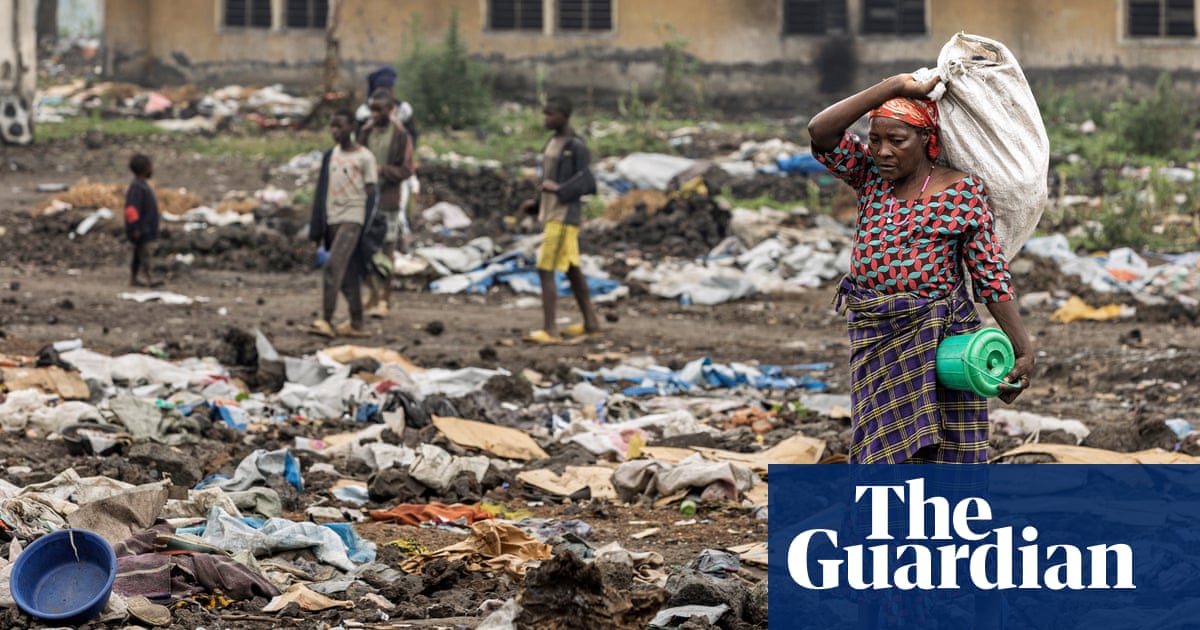
In a small clearing between the oak trees of a forested plateau in the Iberian highlands in eastern Spain, a group of Przewalski’s horses graze on grass and small shrubs; the pale beige of their belly contrasting against the greyish green of the landscape.
Short and stockily built, the endangered Przewalski’s horse is considered the world’s last wild horse. Originating from the open steppes of central Asia, they were driven to extinction in the wild and successfully reintroduced to their native habitats at the turn of the century.
The herd of 10 animals arrived in this rugged mountain chain, a two-hour drive from Madrid, from a reserve in France in May. The horses’ introduction into the 850,000-hectare (210,040-acre) landscape of steppes, river canyons, pine, oak, juniper forests and farmland is part of Rewilding Spain’s 20-year initiative to return one of Europe’s least populated areas to a wilder state – and its first project.
After acclimatising in a 17-hectare enclosure, the horses will be released in September – which could make this little-known corner of Spain the second place in Europe after Chornobyl where Przewalski’s horses roam free.

“I live for the Przewalski’s,” says the herd manager Pablo Villa, who has worked with horses all his life. The 58-year-old returned to his local village of Villanueva de Alcorón after nearly 30 years away when Rewilding Spain launched its initiative in October. He could not miss the opportunity of a job on his home land, he explains, his eyes shining.
Once covered by large herds of sheep, decades of land abandonment and depopulation have earned the area, more than five times the size of Greater London, the name of “empty Spain”. Today, fewer than two people per square kilometre live in these highlands.
Low levels of human disturbance have allowed the return of fallow, roe and red deer – which can be spotted grazing at sunset – and the largest population of Egyptian vultures in Europe. Rewilding Spain’s wildlife recovery scheme is focusing on reintroducing large herbivores and predators, such as the black vulture and Iberian lynx, which once inhabited the land.
But as importantly, the NGO is determined to make the initiative work for local people. The return of a more diverse nature can become the backbone of a regenerated rural economy, based on the promotion of local produce, responsible nature tourism and educational programmes, it says.
Putting this vision into practice and supporting local businesses to thrive is the job of Basi Rodríguez, the enterprise officer at Rewilding Spain, who recently settled in the area with his family. Building a bridge between rewilding and local development is absolutely essential in an area that has been shaped by human activities for centuries, says Rodríguez.
“If you come here to rewild and say to local people ‘don’t touch anything’ that just isn’t going to work. We have to integrate the rewilding perspective into how people live.”
The Przewalski’s horses are well suited to the local climate, which turns bitterly cold in winter, and are the closest animals to the extinct wild horses that would have grazed the land. They can therefore fulfil a similar ecological function.

Restoring natural grazing will help improve biodiversity and regenerate the soil, says Pablo Schapira, the initiative’s team leader. Years of intensive grazing by livestock treated with antibiotics and antiparasitics have killed off dung beetles, for example, which help bring nutrients back into the soil.
Elsewhere, semi-wild Serrano horses, an endangered local breed, and a herd of tauros, cattle back-bred to resemble aurochs, an extinct wild bovine species, have been released.
By eating long grass and shrubs, the grazers have another critical role to play: they reduce the forest’s biomass which is potential fuel for fires. “We are facing a new generation of fires that are so big they are changing the temperature of the environment and are nearly impossible to stop,” says Schapira.
To have a significant effect on the landscape and help make the forest more resilient, hundreds of animals would need to graze the land. But Schapira, who honed his trade in national parks across Africa, is optimistic. “In five years’ time, I hope we have the biggest population of Przewalski’s horses in Europe that are free to roam.”

A few kilometres away, vast, undisturbed forests have supported the reintroduction of black vultures, one of the world’s largest birds of prey, which disappeared from the landscape in the 1920s.
At the initiative of the regional government, 17 birds have been released since 2021. Rewilding Spain and the local NGO Terra Naturalis, which is implementing the project, have plans to release another 35 to 50 birds over the next four years.
An experimental release of the Iberian lynx is also planned for the end of the year. Rabbit populations – the lynx’s main prey – have plummeted after the introduction of disease to control their numbers. The study aims to establish if lynx can survive by eating small mammals, such as young deer.
The Iberian highlands are made up of three main areas: Serranía de Cuenca, Alto Tajo and Montes Universales crossing the regions of Castilla-La Mancha and Aragon. Like the concentric layers of an onion, its nature benefits from different levels of protection.
More than half the area is protected by the EU’s Natura 2000 – which aims to ensure the survival of Europe’s most valuable species and habitats. Within lie two natural parks, where some activities such as intensive agriculture have been banned.
The Alto Tajo national park is crossed by the Tagus River, one of the most pristine in Europe and the longest on the Iberian peninsula, rising from the mountains in Montes Universales and meeting the Atlantic Ocean in Lisbon.
A proposal to create a national park around parts of the deep gorges carved by the river’s flow could elevate nature protection to the highest level in Spain. The designation would ban hunting, fishing and logging in an area of up to 40,000 hectares, but allow traditional forms of agriculture to continue.
Despite bipartisan political support, the proposal has encountered resistance. Hunting, although in decline, remains a main source of income for local people and municipalities which own many of the hunting concessions.
Ignacio Jiménez, coordinator of the Our Protected Spaces campaign with Europarc-España, is working with local stakeholders to build bottom-up support for the national park. The designation, he said, would only apply to a corridor along the river where few hunters go and, by law, local authorities would be compensated for the loss in revenue.

Rather than taking something away, the national park could be a catalyst for rural development, he says. The status would guarantee investments from the national government, create jobs – including a fire brigade – and put the area on the map for nature tourism.
But that cannot happen without the support of local people. “It’s about changing the culture of people” and building trust that conservation will bring new socioeconomic benefits, says Jiménez.
Eventually, the protection of the Alto Tajo could create a model for rural regeneration that other parts of depopulated Europe could emulate, he adds.
“We want to demonstrate that people can live with nature and profit. I think that’s the way forward. That’s what excites me.”










 English (US)
English (US)